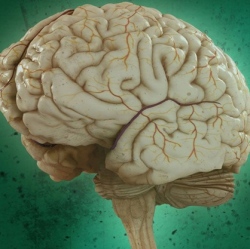
In recent years, scientists have made small steps towards understanding the relationship between sleep and Alzheimer’s disease. Now, researchers may soon illuminate the connection, they are launching the first experiment of its kind that will study a key process in the brains of sleeping humans.
Disrupted sleep patterns have long been a common complaint for patients in the early stages of Alzheimer’s disease, sometimes decades before they develop cognitive problems or noticeable memory loss. The reason, researchers have discovered, is likely the buildup of beta amyloid plaque, a sticky amalgamation of proteins that collects in synapses and is characteristic of Alzheimer’s disease. A number of studies published in the last five years have found that people (and mice) with disrupted sleep patterns had more beta amyloid plaque in their brains.
Researchers are starting to get a sense for why this is the case, sleep may sweep toxins from the brain, preventing beta amyloid from collecting in synapses. But scientists are still not sure what comes first, does the beta amyloid buildup cause the disrupted sleep, or the other way around? “It may be a vicious cycle," Miroslaw Mackiewicz of the National Institute on Aging told the AP in July.
In order to better understand the brain’s “sweeping” mechanism that may be key to the Alzheimer’s puzzle, the Oregon team plans to observe people’s brains while they sleep. To do it, they’ll use a super-sensitive MRI machine to monitor just how and when the sweeping occurs during a participant’s sleep cycle.
Though the researchers know it may be challenging to get volunteers to sleep in a noisy, confined MRI machine, they hope their findings could illuminate the relationship between sleep and Alzheimer’s disease. If they can figure that out, new treatments and preventative measures for the disease may soon follow.
